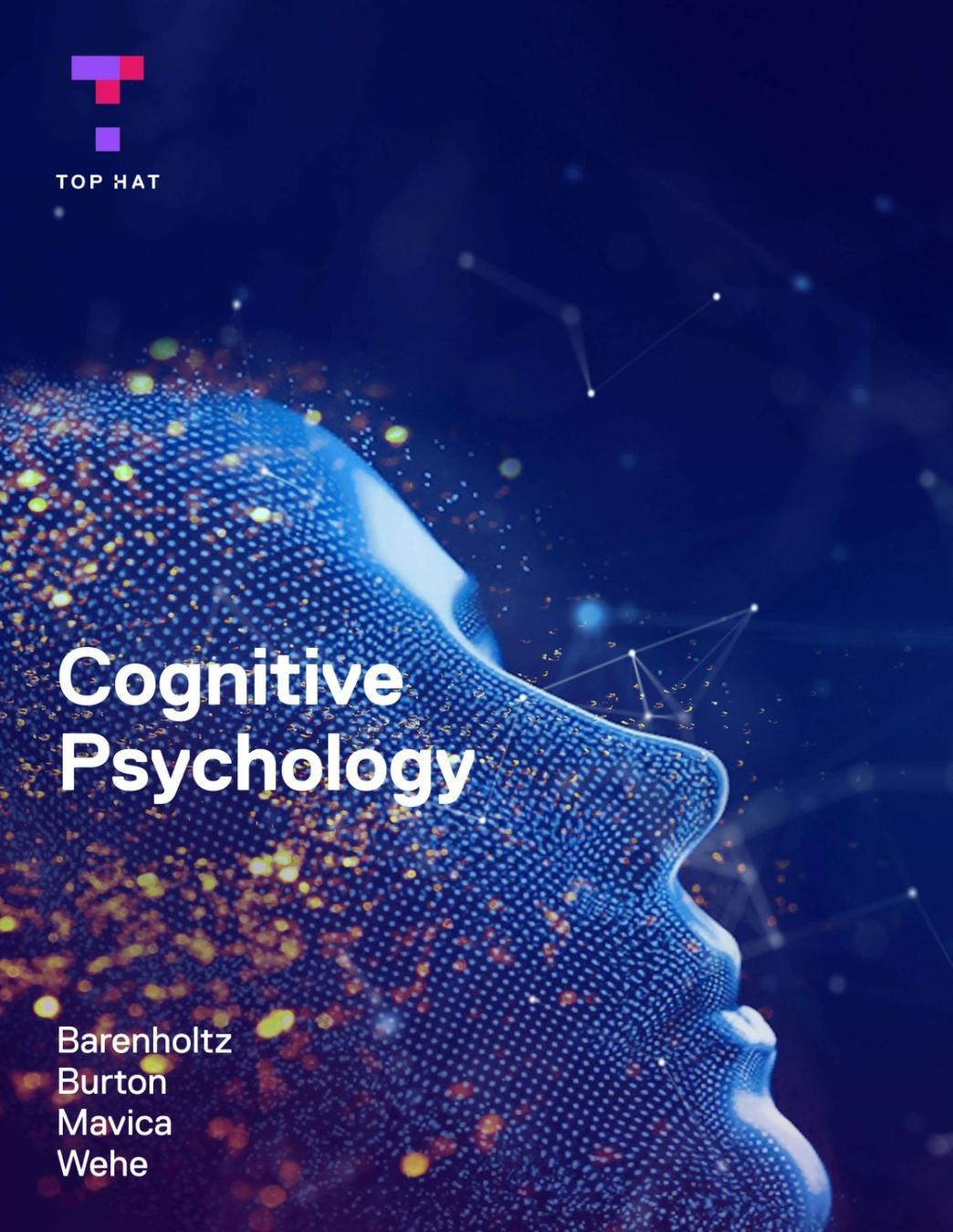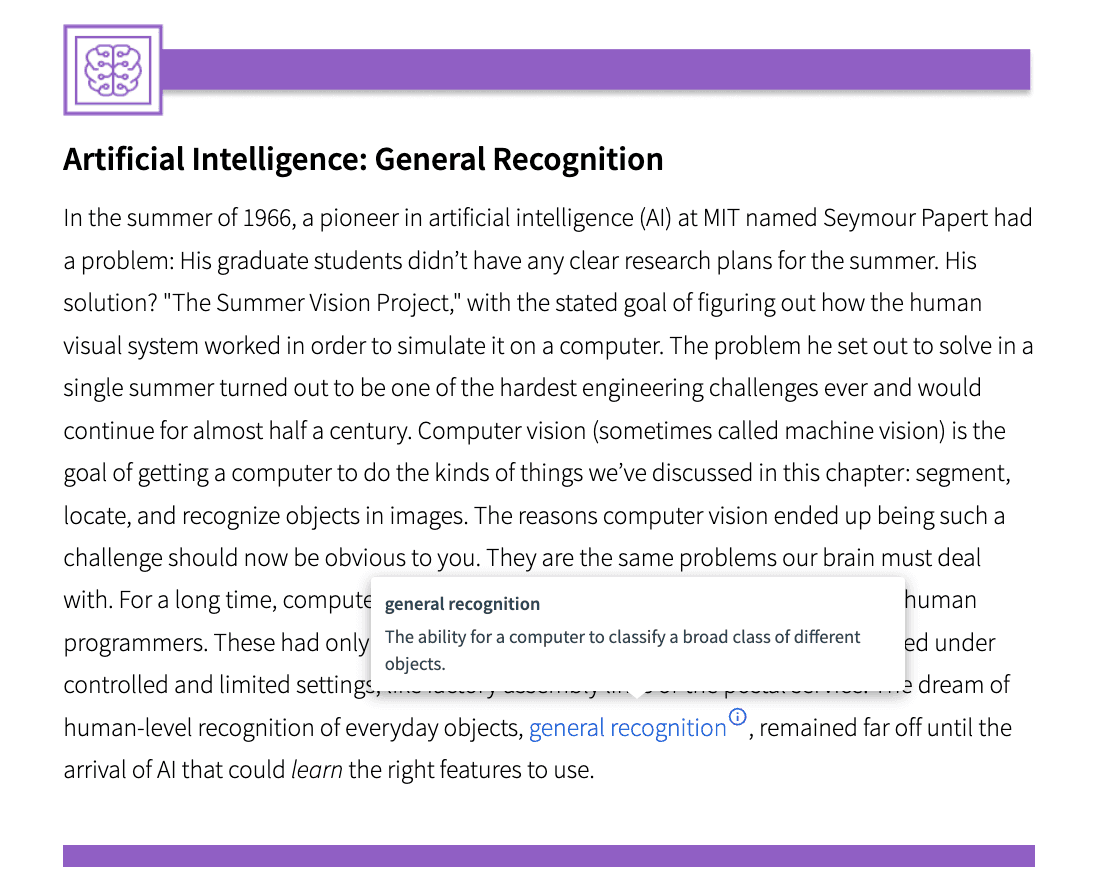Cognitive Psychology
Elan Barenholtz, Christine Burton, Lauren Mavica, Hillary Wehe
Developed with a digital-first approach and written in a digestible, easy-to-read style, Cognitive Psychology engages students in a wide array of topics in cognition with relatable examples and applications to their everyday lives. Each topic includes a dedicated set of critical thinking questions and engaging coverage on cognitive psychology applications in the development of AI, teaching the functions of the human brain from a unique perspective. The text is further enriched with response system-enabled class activities and interactive components that allow students to experience and better understand a phenomenon first-hand.

Top Hat Interactive eText
requires a join code from instructor
$86.00USD
all prices represent net price, not including 3rd party markups

Table of Contents for Cognitive Psychology
- About this Course
- Chapter 1: Introduction
- Chapter 2: How to Study Cognition
- Chapter 3: The Brain
- Chapter 4: Perception
- Chapter 5: Attention
- Chapter 6: Short-Term and Working Memory
- Chapter 7: Long-Term Memory
- Chapter 8: Autobiographical Memory
- Chapter 9: Knowledge
- Chapter 10: Visual Imagery
- Chapter 11: Language
- Chapter 12: Problem Solving
- Chapter 13: Reasoning and Decision Making

Key features
- Call-out sections connect chapter content to the exciting and rapidly evolving field of Artificial Intelligence (AI), connecting the developments to cognitive psychology
- Students experience phenomena for themselves through integrated multimedia elements, in-class activities and demonstrations—optional add-on interactive lab simulations also available
- New in-class activities with live response questions and pre-built, customizable stimuli that can be launched with the click of a button for students to experience a phenomena together as a class